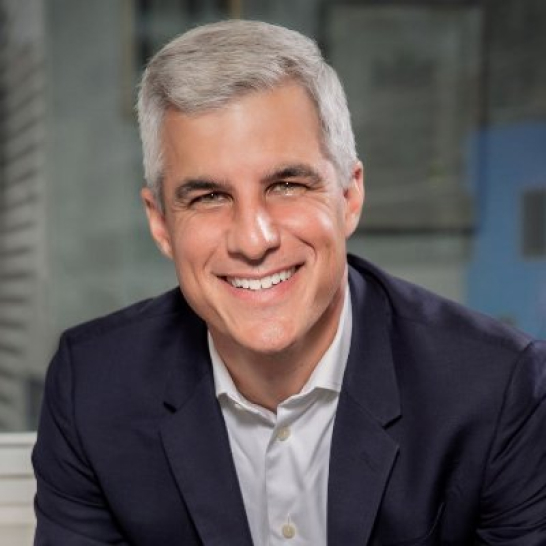3 Things Standing In The Way of Audiences Seeing More Broadway Shows
In 2003, while working as the Company Manager on the Broadway revival of Gypsy, my life changed.
It wasn’t the show itself, although it was an incredible production. Sam Mendes directed. It starred the magnificent Bernadette Peters, who was a star on and off the stage.
But it wasn’t any of that.
It was the focus group I went to ABOUT the show that altered my course of theatermaking.
I wasn’t even sure what a focus group was when the advertising team asked me if I wanted to go. But any opportunity I had to learn anything about the theater from anyone, I was up for. And the next thing I knew I was in a nondescript office building in New Jersey, behind one-way glass, listening to a moderator talk to 10 theatergoers about their theatergoing habits.
How often did they go? Who did they go with? What shows were on their list?
Their answers were mind-blowing. And in that moment, I realized something. We know nothing.
Ok, ok. That’s an exaggeration. But too often, we sit around tables and hypothesize about what our audiences want . . . without talking to them. Without listening to them.
(One of my favorite comments that day was that someone thought our production of Gypsy was the same production that Tyne Dale starred in years before. They thought it kept on running!)
I vowed from behind that glass that day that I would always do focus groups on my shows.
I’ve kept that promise to myself and to my creative and producing teams. (We’ve always learned something that can make our shows or our marketing better.)
And recently, I hired the crackerjack group of researchers at ERM to do another.
Once again, my mind exploded at all the things I did not know.
There were a zillion takeaways that day. But I wanted to focus on the three biggest OBSTACLES audience members described when we asked them why they didn’t see more theater. I figured if we could eliminate or reduce the size of that obstacle, we’d all win.
Here’s what they said when we asked:
“Why don’t you see more shows?
1. TIME
Audience members are pulled in 100 different directions. Work, vacation, weddings, graduations, their kids’ travel soccer leagues, etc, etc. They express a strong desire to see more shows (and I believe them.) But they struggle to find the time.
This is something that has gotten worse over the years. And it’s one of the reasons our audiences are older (and always will be older). As a person ages, as their kids age, as they approach retirement, etc, they have more time. So they see more shows.
What can we do?
We can’t find more hours in the day. We can’t tell them to skip their nutty Aunt’s 78th birthday.
But we can give them different schedules that cater more to their schedules instead of ours. See this post I wrote last week.
Oh, and we can create killer shows. Because when something is of super high value, people always find the time.
2. SOMEONE TO GO WITH
This one surprised me.
See, most people go to shows with at least one other person. So when they want to see a show, they don’t buy tickets right away. They pick the show, then they have to pick the person, and then they both have to pick a date. No wonder it takes a while for shows to get traction!
But that person is more of a hold-up for theatergoers than I ever thought.
One piece of feedback we heard from a lot of women (who buy the largest percentage of theater tickets) is that they want to attend with their spouse or partner . . . but they want to make sure their spouse or partner likes the show. Because if they don’t, the chances of them wanting to see another show drops.
That’s a lot of pressure!
And what if . . . one partner wants to see a show and the other partner doesn’t . . . or a single person wants to see a show . . . but doesn’t want to go alone. Then they have to search for the right person.
Or more likely, they just wait and wait until they never see the show.
What can we do?
More mix-and-mingle nights. More meetups. More extensions of the evenings before or after the show to make it a true experience – and to give people who are by themselves a chance to be around other people who are by themselves. And then presto, they are not by themselves anymore!
We’re trying something like this for A Beautiful Noise. Click here to check out our bus trip from New Jersey.
3. THEY DON’T KNOW THE STORY
This is the least logistical issue, but the one issue that comes up the most. And the one we can do something about.
Every single time I do a focus group we hear over and over . . . “What I want to know is the story. Is it a good story? What’s the story?”
It’s a great reminder that if your marketing isn’t communicating what your show is about . . . and if it’s not doing it in a suspenseful, exciting, dramatic way . . . it’s going to be hard for audience members to buy a ticket.
Yes, they want great music, sets and costumes, and all that spectacle stuff . . . but most importantly, they want great stories. This is why musicals with ONLY great music or ONLY big sets sometimes don’t work. Because without a story, there’s nothing.
What can we do?
Make sure your story is a part of all of your messaging. And take more time and more copy to tell your story. We’re experimenting with 60 second TV commercials, as opposed to the industry standard 30 second commercials . . . and it’s working.
Audiences have all the answers. We have to make sure we keep asking the questions.
And then do something with those answers.
Podcasting
Ken created one of the first Broadway podcasts, recording over 250 episodes over 7 years. It features interviews with A-listers in the theater about how they “made it”, including 2 Pulitzer Prize Winners, 7 Academy Award Winners and 76 Tony Award winners. Notable guests include Pasek & Paul, Kenny Leon, Lynn Ahrens and more.













